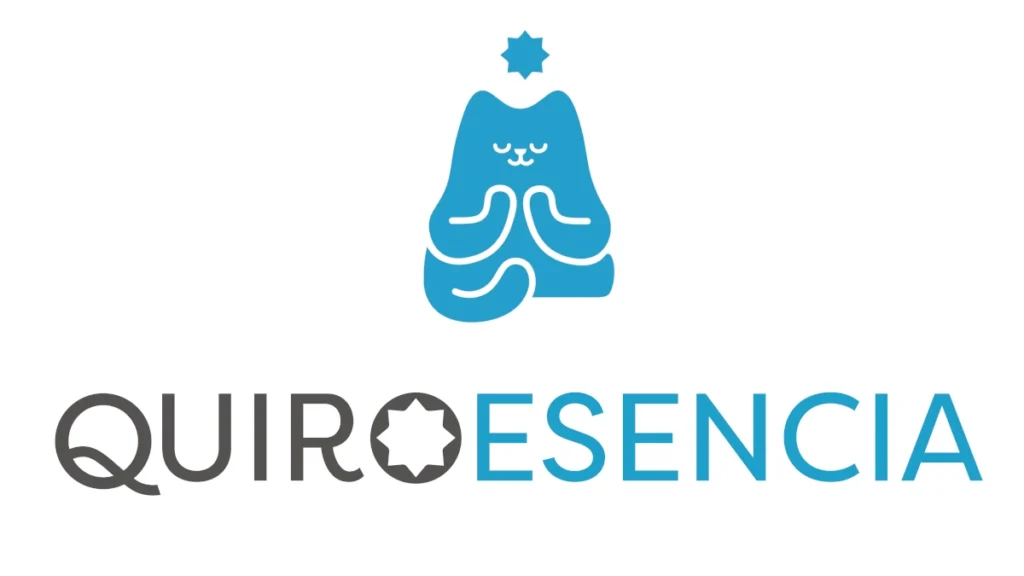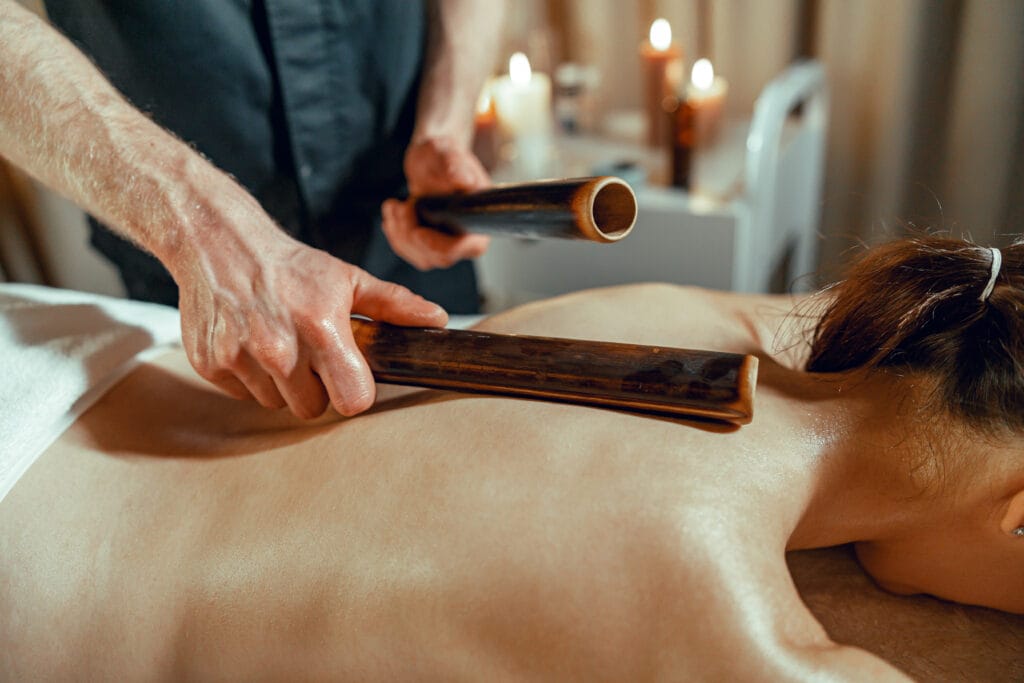Relaxing massage or drainage massage: differences, benefits, and which one to choose based on your needsWhen someone first calls me to schedule an appointment, one of the most common questions I get is: “Should I get a relaxing massage or a draining one?” And my answer always starts the same: It depends on what your body needs at the moment.
Although both massages feel soft and pleasant, They do not have the same goals or work in the same wayRelaxation massage is designed to calm the nervous system and release emotional and muscular tension. Drainage massage (or manual lymphatic drainage) focuses on stimulating the lymphatic system to eliminate toxins, reduce inflammation, and improve circulation.
Often, what you think you need isn't what your body is actually asking for. I've seen people with heavy legs who thought they were experiencing stress, or people with anxiety who came in for fluid retention. And that's where listening comes in, both from the therapist and from your own body.
In this article I want to help you understand the difference between these two types of massage, so that you can make an informed and loving decision for yourselfBecause choosing well isn't a luxury: it's the first step toward feeling better.
What is a relaxing massage?
Relaxation massage is like a long, deep caress to the nervous system. It is a technique that works with slow, enveloping, and rhythmic movements, designed to induce a state of physical, mental and emotional calmIt's not a painful massage, nor does it seek to forcefully "untangle" knots. On the contrary, its strength lies in its gentleness.
Techniques, rhythm and objectives
This type of massage uses techniques such as gentle stroking, long gliding strokes, delicate kneading, and moderate pressure to encourage the body to release tension.
Its main objective is activate the parasympathetic nervous system, which allows the body to rest, repair, and recover. When this system is activated, the heart rate slows, breathing deepens, and the body enters a "safe" state.
In simple words: it is the massage that helps you lower the revolutions when you come with a racing mind or a tense body.
When is it best to receive it?
- When you feel a lot of stress or anxiety
- If you have trouble sleeping or are mentally exhausted
- If you have mild contractures caused by emotional tension
- In times of grief, change, or general exhaustion
- As part of a self-care and prevention routine
Physical, emotional and energetic benefits
- Relieves minor pain and muscle tension
- Improves sleep quality
- Calms the mind and regulates emotions
- Promotes deep breathing and rest
- Harmonizes body energy (ideal if you feel “cut off”, weak, scattered)
What is a drainage massage?
The draining massage, also known as manual lymphatic drainage, is a very gentle therapeutic technique that aims to stimulate the lymphatic system. And what is that? A system that is responsible for eliminate toxins, retained fluids and metabolic waste from the body.
It's like the body's internal cleaning service, but it's often overloaded by stress, a sedentary lifestyle, surgery, or hormonal changes.
What is the lymphatic system and how do we stimulate it?
Unlike the blood system, the lymphatic system It doesn't have a "heart" to pump it, so it depends on body movement, breathing and, precisely, external stimuli such as this type of massage to work well.
Drainage massage is performed with slow, repetitive movements, always in the direction of lymphatic flow. It's painless, gentle, and far from what is known as a "hard massage."
It is a very specific technique that I learned years ago, and I assure you that When done well, the body responds with a wonderful lightness.
Most frequent indications
- Fluid retention (swollen legs, ankles, abdomen)
- Cellulite or orange peel skin
- Post-operative (cosmetic surgeries or medical treatments)
- Hormonal disorders (menopause, changes due to contraceptives, etc.)
- Heaviness, feeling of “general swelling”
- Low immunity or chronic fatigue
Immediate sensations and effects
After a drainage massage session, many people feel:
- Lighter body, especially in the legs and abdomen
- Visible reduction in swelling
- Greater mental clarity (yes, brain fog is also cleared!)
- Need to urinate more (a sign that the body is eliminating what it doesn't need)
I remember Laura, a patient who came in with legs so heavy she had trouble sleeping. After three sessions, she not only felt lighter, but she also began to rest better and noticed less swelling at the end of the day.
Main differences between drainage massage and relaxing massage
Although from the outside they may both seem similar—smooth movements, calm rhythm, pleasurable sensation—in reality They work at different levels and with different objectivesAnd this is evident in both the technique and the results.
Intensity, rhythm and type of contact
- Relaxing massage:
- Surrounding contact, with medium pressure
- The whole body is worked evenly
- Fluid movements, like a wave coming and going
- Focused on relax muscles and calm the mind
- Surrounding contact, with medium pressure
- Draining massage:
- Very superficial and specific touch
- It works following the path of the lymphatic system
- Repetitive movements, with constant rhythm and precise direction
- Focused on decongest fluids and stimulate the elimination of toxins
- Very superficial and specific touch
Therapeutic objectives
- Relaxing massage:
- Ideal for people with stress, anxiety, insomnia, emotional fatigue
- Helps release mild muscle tension and balance energy
- Ideal for people with stress, anxiety, insomnia, emotional fatigue
- Draining massage:
- Ideal for people with inflammation, fluid retention, slow circulation or post-operative
- Promotes the elimination of toxins, improves immunity and reduces edema
- Ideal for people with inflammation, fluid retention, slow circulation or post-operative
Can they be combined?
Yes, and in fact it's something I do frequently!
There are sessions where I begin with relaxing techniques to help the body release and surrender, and then I incorporate drainage in the legs or abdomen as needed.
The key is in Personalize each session according to what the body asks for that day.
Benefits of combining relaxing massage with manual lymphatic drainage
- Deep relaxation of the nervous system
Relaxation massage, with its slow, rhythmic, and enveloping movements, induces a state of calm that is ideal for people with stress, anxiety, or insomnia. If we add manual lymphatic drainage, which works directly on the lymphatic system (linked to the autonomic nervous system), the relaxation effect is further enhanced.
- Stimulates the elimination of toxins and retained fluids
Manual lymphatic drainage, by working with gentle, superficial movements following the natural path of the lymph, helps the body get rid of what it no longer needs: toxins, edema, subtle inflammation.
Combined with a relaxing massage (which also activates circulation, but at a deeper level), an ideal circuit is created: blood is moved, lymph is released, and the body is decongested.
- Improved circulation and tissue oxygenation
This combination promotes more fluid blood circulation, which translates into more oxygen and nutrients reaching muscles, skin, and organs.
Result: brighter skin, looser muscles, less feeling of body heaviness.
- Strengthens the immune system
The lymphatic system is a key part of our defenses. By stimulating it manually, we help the body detect and eliminate pathogens more efficiently.
This benefit is not seen, but it is felt: fewer colds, better recovery, more vital energy.
- Ideal for states of physical and emotional exhaustion
Often, fatigue isn't muscular, but emotional. A relaxing massage soothes the body, while lymphatic drainage cleanses out accumulated buildup. Together, they provide a holistic rest that helps restore balance when we feel "overwhelmed."
- Ideal complement in aesthetic or therapeutic processes
This combination is perfect to accompany:
- Postoperative treatments (always with medical approval).
- Fluid retention due to hormonal imbalances.
- Inflamed or cellulite skin.
- Stress-related muscle pain.
Which one is right for you?
Sometimes we think we need to relax, but our body is asking to eliminate toxins. Or the other way around: we feel heavy legs and think "something strong" will make it go away... when what we really need is a gentle, conscious touch.
Therefore, beyond the massage etiquette, the most important thing is read the signals your body gives you.
Choose a relaxing massage if you feel:
- A lot anxiety or mental stress
- Mild muscle aches (not injuries)
- Feeling of “not being able to stop your head”
- Problems sleeping or resting deeply
- Emotional changes (grief, major changes, irritability)
- You have a hard time “downshifting”
Choose a drainage massage if you notice:
- Swollen or heavy legs, especially at the end of the day
- Feeling of fluid retention or swollen abdomen
- Hormonal changes (menstruation, menopause, contraceptives)
- Postoperative recovery (with medical indication)
- Cellulite or slow circulation
- Physical tiredness with heaviness, but without muscle tension
What if I have a little bit of everything?
No problem! In that case, the best thing is consult and adapt the sessionI often combine both techniques in a single session: for example, a half-hour of upper body relaxation and gentle drainage for the legs or abdomen.
The important thing is not to force the body, but to accompany it in what it needs that day.
Listening to the body is the key
We often experience our bodies as machines that have to perform. We only stop when they hurt, get stuck, or get sick. But the body isn't an obstacle; it's a messenger.
And every symptom—from bloating to anxiety—is a way it's trying to speak to us.
Massage, whether draining or relaxing, is an opportunity to lower the volume of the external world and raise the volume of our internal listening.
It's not just about choosing one technique or another. It's about asking yourself: What do I need today?
Calm the mind? Free the body? Feel lighter? Let go of what weighs me down inside?
There's no one option that's better than the other. There are moments, there are cycles, there are signs. If you know how to read them, your body becomes your best guide.
And you can always consult with me if you are not sure and together we can choose which path is best to take at any specific moment.

